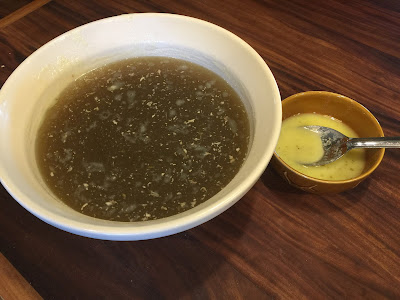Chicken
noodle soup, chicken and dumplings, chicken pot pie: these are just a few things
I use my homemade chicken stock in.
Making your
own stalk is easier than you think, it’s healthier, bolder and making your own
saves you a little in the pocket book. I usually
make a big batch in the fall and freeze for the coming colder weather.
Whenever, I have a recipe that calls for chicken stalk, I defrost and use.
What You'll Need:
5 lbs. Chicken
Leg Quarters
3 Large
Yellow Onions (unpeeled & quartered)
6 Carrots
(unpeeled & halved)
4 Celery Stalks
(with leaves, cut into thirds
1 Large Head
of Garlic (unpeeled cut in half crossways)
2 T. Kosher
Salt
2 t. Black
Whole Peppercorns
8 Quarts of
Water
2 T. Parsley
Flakes
1 T. Thyme
Leaves
2 t. Dill
Weed Ground
Directions:
Put parsley, thyme and dill weed into cheese cloth and tie.
In a 16 to 20
oz. stock pot add all ingredients, including cheese cloth and simmer uncovered for four hours.
Strain the
entire contents of the pot through a colander and discard the solids. Chill the
stock overnight. The next day, remove the surface fat. Use immediately or pack
into containers and freeze for up to three months.
Makes 8 Quarts




Comments
Post a Comment